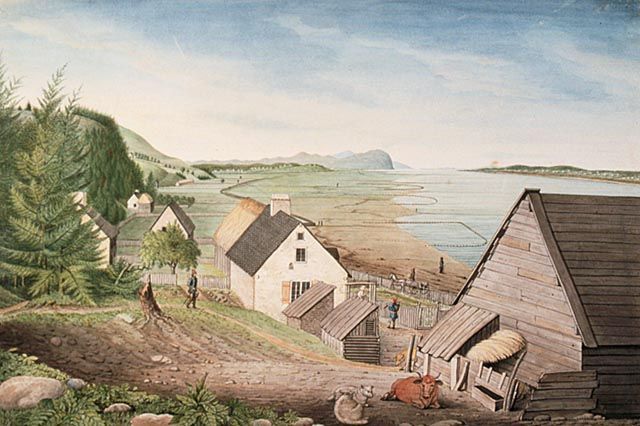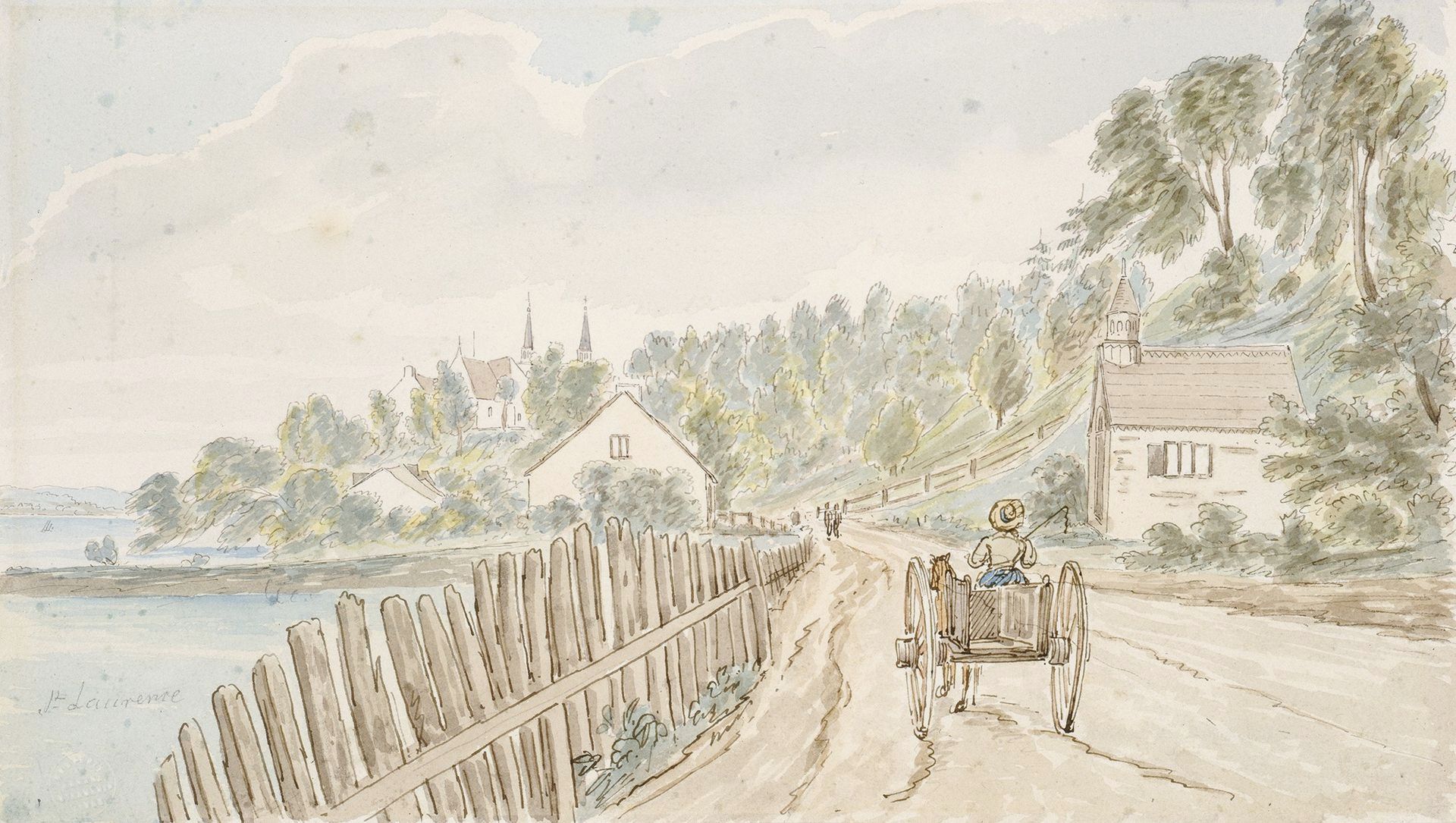

Eel Fishing Nets on the Isle of Orleans


[Road through Château Richer - painting by James Pattison Cockburn (1779-1847)]
Settlements in the Quebec Region
The initial influx to the region began in the 1630s when small family groups from Perche and Normandy arrived and settled on the north shore of the St. Lawrence.
As more arrivals came, land clearance along the north shore continued. By 1663, the pioneers had established farms between Neuville, west of Quebec City and Ste-Anne-de-Beaupré on the east side of the city. Much of this land was held by the Jesuits and other religious orders. The Isle of Orleans seigneury with its five parishes – Ste-Famille, St-Pierre, St-Laurent, St Jean and St-François, was also well-inhabited at this time.
Soon after this, the pioneers were also to be found in small, scattered communities, such as Rivière-Ouelle, in the Lower St. Lawrence Valley.
By 1692 the settlers and their offspring were living in farmsteads on both shores of the St. Lawrence River. Although this represented a significant expansion of territory covered, the greatest population growth had taken place in or near to the earlier French communities which had been established by 1663.
By 1760, both shores of the St. Lawrence River in the Quebec region were almost continuously inhabited by settlers as were its tributaries – the Chaudière, Boyer and Rivière-du-Sud.